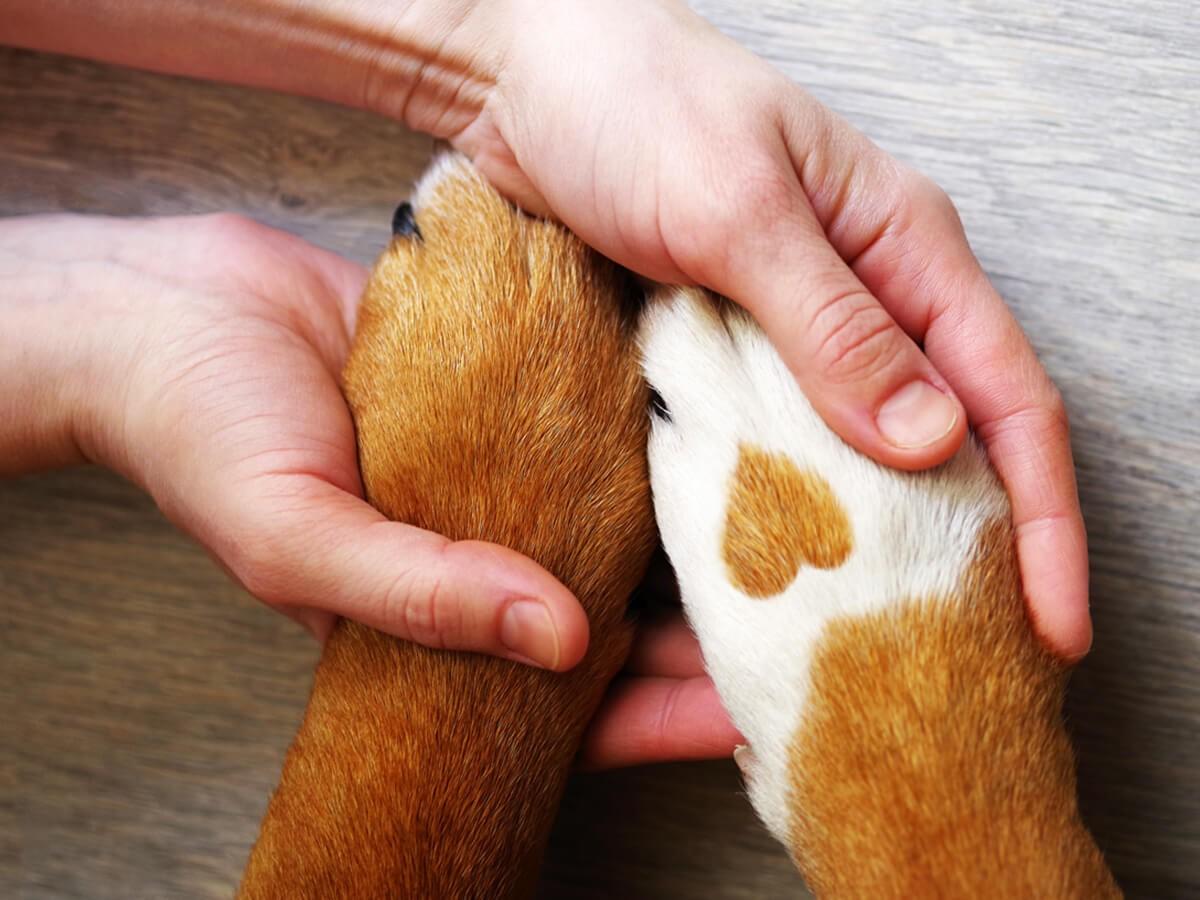As a pet parent, it's important to keep your furry friends in the best health possible, and that includes taking care of their precious paws. In this article, we'll explore the best tips for pet paw care, so you can help ensure your four-legged companion is always ready to play, explore, and snuggle with you.
Let's dive into the pawsibilities!
1. Tips for Paw Health: The Fundamentals
A. Regular Paw Checks
An important part of keeping your pet's paws in top shape is routinely checking them. Here are a few paw injuries to look for:
Swelling or redness
Cuts or abrasions
Foreign objects lodged in the paw
Dry or cracked pads
Signs of infection, such as pus or discharge
B. Nail Trimming
Long nails can lead to discomfort, pain, and even injury. Ensure your pet's nails are trimmed regularly to help keep them comfortable and healthy. If you're unsure how to do this, consult a veterinarian or professional groomer for guidance on nail trimming and paw grooming.
C. Moisturizing Pads
Dry, cracked paw pads can be painful for your pet. Use a pet-safe moisturizer or paw balm to help keep their pads supple and prevent cracking. Avoid using human lotions, as they could contain ingredients harmful to your pet.
2. Seasonal Tips for Healthy Pet Paws
A. Summer Paw Protection
Summer can be a scorcher, and hot pavement can burn your pet's paws. To help protect them, consider:
Walking on grass or shaded areas
Using pet-safe sunscreen
Investing in paw protectors or booties
Winter Paw Care
Cold weather can be harsh on your pet's paws. Here are some tips to help keep them safe:
Use pet-safe ice melt
Wipe paws after walks to remove snow, ice, and chemicals
Keep fur between paw pads trimmed to help prevent ice buildup
3. Preventing Paw Injuries
A. Paw-proof Your Home
To help reduce the risk of injuries, make your home paw-friendly:
Keep sharp objects out of reach
Cover cords and wires
Secure rugs to help prevent slipping
B. Choose Pet-friendly Surfaces
Opt for pet-friendly surfaces when designing your home and outdoor spaces. This can include soft grass, rubberized surfaces, and non-slip flooring.
4. Exercise and Paw Health
A. Keep Your Pet Active
Regular exercise is essential for overall health, including paw health. It helps keep nails naturally worn down and promotes good circulation.
B. Choose the Right Activities
Engage in activities that are suitable for your pet's breed, age, and health. Consult your veterinarian for advice on the best exercises for your pet.
5. Seeking Professional Help
If you notice issues with your pet's paws, consult your veterinarian promptly. Early intervention can help prevent more severe problems.
FAQs
1. How often should I check my pet's paws?
It's a good idea to check your pet's paws weekly, or more frequently if they spend a lot of time outdoors or have a history of paw issues.
2. How can I tell if my pet's nails are too long?
If you hear clicking noises when your pet walks on hard surfaces or if their nails are curling under, it's time for a trim. Ideally, pet nails should not touch the ground when they stand.
3. What should I do if I find a foreign object lodged in my pet's paw?
If the object is small and easily removable, carefully use tweezers to extract it. Clean the area with mild soap and water and monitor for signs of infection. If the object is deeply embedded or you're unsure how to remove it, consult your veterinarian.
4. Can I use human moisturizer on my pet's paws?
No, it's not recommended to use human moisturizer on pet paws as they could contain ingredients harmful to your pet. Opt for pet-safe moisturizers or paw balms.
5. How do I choose the right paw protectors or booties for my pet?
Look for booties made from breathable, durable materials that provide good traction. Make sure they fit snugly but comfortably. You may need to try a few different brands or sizes to find the perfect fit for your pet.
6. What are some signs of infection in my pet's paws?
Signs of paw infection may include redness, swelling, pus or discharge, foul odor, and your pet excessively licking or chewing their paws. If you suspect an infection, contact your veterinarian.
How Spot Pet Insurance Can Help
A Spot Pet Insurance plan provides coverage for eligible vet bills in the event that your pet becomes hurt or ill. For example, if your pet hurts their paw in an accident, or develops an infection, a Spot plan can reimburse the eligible costs for the covered services. In addition, Spot Pet Insurance plans offer pet parents the opportunity to customize their coverage so that it fits the needs of their pets and their budget. With a Spot plan, pet parents can choose an unlimited annual limit option with no per incident caps, no lifetime caps, and a reimbursement rate of up to 90% for eligible veterinary costs. Spot Pet Insurance also offers preventive care coverage for an additional cost. Preventive care coverage can cover the eligible costs of routine exams, certain vaccines, and dental cleanings, among many other benefits. To learn more about Spot Pet Insurance plans, get a free quote!
Conclusion
Taking care of your pet's paws is important for their overall well-being. With our tips for healthy pet paws, you can help ensure your furry friend stays happy, comfortable, and ready to explore the world with you. Remember to routinely check their paws, keep nails trimmed, moisturize pads, protect them from seasonal hazards, and consult a veterinarian if you notice issues. Happy paws make for happy pets!
